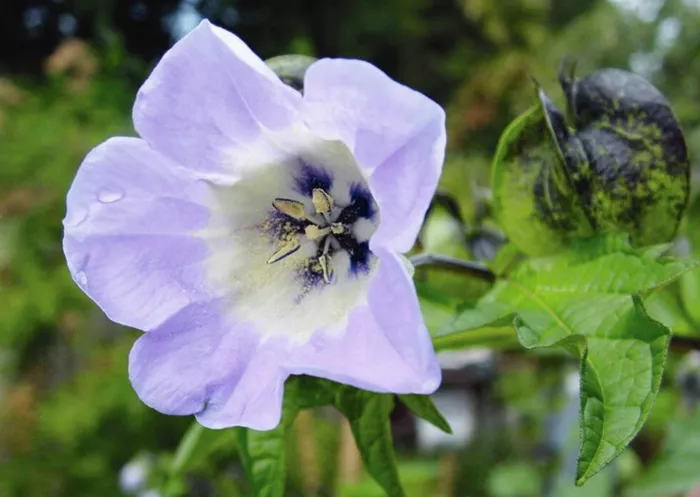Dear Helen,
Last year, I planted nasturtiums around my blueberry bushes for added color and interest. This summer, a volunteer nasturtium grew unexpectedly, spreading across the ground and cascading over a cement wall. Even in early October, new flowers were still blooming. I’d like to collect seeds from this plant for next spring. Can you explain how to do this?
— D.C.
Helen responds: It seems that your volunteer nasturtium has grown in an unusual way compared to the plants you grew last year. Keep in mind, seeds from this year’s plant may not produce the same growth pattern next season. In typical garden conditions, plants often revert to traits found in the seed line’s heritage.
Self-sown plants often surprise gardeners with their strength and size. For example, self-sown kale in my garden this year is far stronger than the ones I planted myself this spring. Similarly, last year’s Nicandra plants grew into larger, bushier trees than usual, but still had beautiful blue flowers.
Nasturtiums often self-sow with little help from us. If your plant has already set seeds, some will likely germinate next spring or summer. However, if you’d like to secure extra seeds, look for large, tan seeds that have dropped from the plant. Gather them, then spread them on paper in a dry, cool area to thoroughly dry before storing them in a paper bag or envelope in a cool, dry spot.
Dear Helen,
In my newly acquired garden, the peony stems have shriveled and browned. Should I leave them over the winter or cut them back?
— W.D.
Helen responds: It’s best to remove peony stems after they fade in the fall. This helps with aesthetics and, more importantly, prevents disease. Peonies are prone to fungal infections, and old foliage can harbor harmful spores. I don’t compost spent peony stems.
After removing the stems, clean up the area well. Apply a light dusting of lime and bone meal, and cover it with a thin layer of nourishing compost or mulch. This will protect the roots and prepare the plant for the next growing season.
Dear Helen,
Creeping field bindweed has taken over my food garden over the past three years. I’ve tried digging it up, using vinegar, and smothering it, but it just keeps coming back. I don’t want to use herbicides. What should I do? My gardening time is limited due to work and family commitments.
— T.J.
Helen responds: Field bindweed (also known as perennial morning glory) is a persistent, invasive weed that spreads through both deep roots and seeds. It’s important to prevent the plant from flowering and setting seeds, as its seeds can remain viable for years.
To control the bindweed, dig up new shoots as soon as you see them, ideally when the soil is damp and soft. A digging fork works better than a shovel to avoid breaking roots into multiple sprouting pieces.
After removing as much of the weed as possible, try laying thick cardboard over the affected area and covering it with leaves or other organic mulch. This can help suppress the weed while keeping the soil prepared for your garden.
Garden Event
The Victoria Master Gardeners will host their biennial Mixing it Up Conference on Saturday, February 1, 2025, at the Mary Winspear Centre in Sidney. This year’s theme is “Beyond Beauty,” and the event will feature five expert speakers on topics like urban trees, designing with native plants, and using citizen science in the garden. Early bird registration is available until November 30 for $75.
Related topics:
- McCown: The Story of Passalong Plants — A Tradition with Deep Roots
- The Unique Scent of Christmas Trees: A Natural Defense Against Pests and Pathogens
- Cuningham House at Christchurch Botanic Gardens Emptied for $10 Million Revamp


